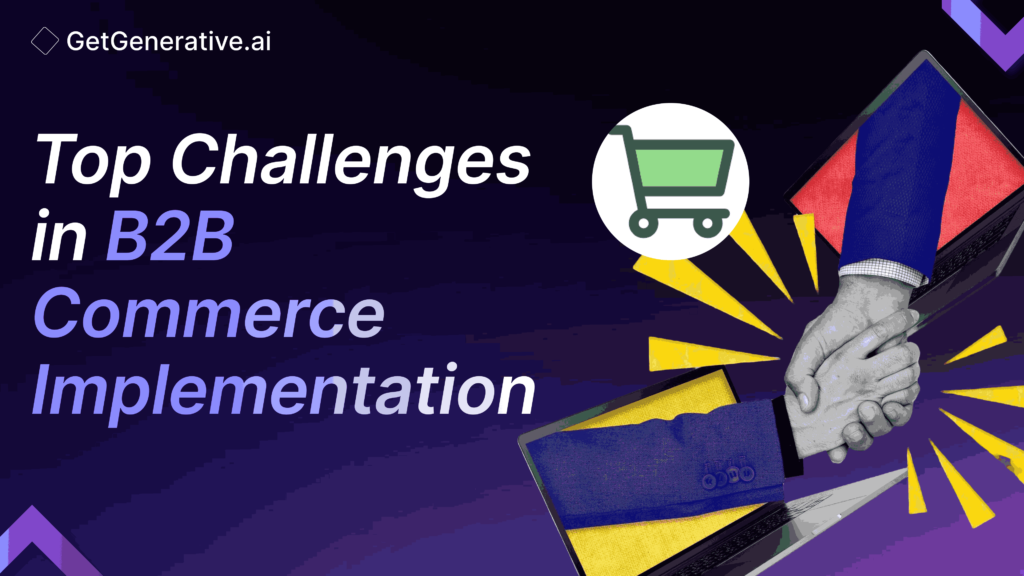Top Challenges in Salesforce B2B Commerce Implementation
Implementing Salesforce for B2B commerce has become a cornerstone for businesses looking to streamline operations and boost customer engagement. However, like any transformative process, it comes with challenges. This article explores these challenges in detail and offers actionable solutions to ensure a seamless implementation.
What is Salesforce B2B Commerce Implementation?
Salesforce B2B commerce implementation refers to configuring Salesforce’s platform to meet specific business requirements. It involves integrating tools, customizing workflows, and migrating data to create a unified system for managing B2B operations. Successful implementation not only enhances customer experience but also drives operational efficiency and revenue growth.
Common Challenges in Salesforce B2B Commerce Implementation
1. Data Migration Complexity
Migrating data to Salesforce is akin to moving into a new house—exciting but demanding. Businesses often face issues such as duplicate records, mismatched data formats, and large data volumes.
- Problem: Migrating legacy data with unique identifiers can cause discrepancies.
- Solution: Implement robust data-cleaning strategies and leverage automation tools like ETL systems to streamline the process. Ensure data validation at every step to maintain integrity.
2. Resistance to User Adoption
Introducing Salesforce can lead to resistance from employees unfamiliar with the platform. Poor user adoption directly impacts ROI and productivity.
- Problem: Lack of training and fear of change hinder smooth adoption.
- Solution: Engage employees early with tailored training programs. Highlight Salesforce’s benefits, such as its user-friendly interface and time-saving features, to build confidence.
3. Integration Challenges with Legacy Systems
Many organizations operate using older systems that may not align seamlessly with Salesforce.
- Problem: Integrating Salesforce with ERP, marketing automation, or support platforms can be technically challenging.
- Solution: Use pre-built connectors and APIs provided by Salesforce. When necessary, rely on experienced developers to create custom integrations for smooth data flow.
4. Customization and Scalability
Over-customization can lead to maintenance issues, while inadequate planning for scalability can hinder growth.
- Problem: Excessive customization makes upgrades challenging and expensive.
- Solution: Stick to essential customizations aligned with Salesforce’s best practices. Design your implementation with future scalability in mind to support business growth.
5. Ensuring Data Security
With growing cybersecurity threats, securing sensitive business and customer data is non-negotiable.
- Problem: Improper configuration can leave data vulnerable to breaches.
- Solution: Implement Salesforce’s security features such as role-based access control, data encryption, and regular audits to safeguard information.
6. Cost Overruns
The initial setup and ongoing maintenance of Salesforce can strain budgets, especially for small and medium-sized businesses.
- Problem: Unplanned expenses lead to financial strain.
- Solution: Plan budgets meticulously. Utilize out-of-the-box Salesforce features like analytics and automated workflows to reduce reliance on costly customizations.
7. Runtime Errors and API Limitations
Salesforce operates in a multi-tenant environment, enforcing strict API limitations that can lead to runtime errors during integration.
- Problem: Exceeding API limits disrupts workflows.
- Solution: Monitor API usage closely and optimize requests. Use Salesforce’s built-in tools for efficient API management.
Related Read – Key Features of Salesforce B2B Commerce Cloud
Strategies to Overcome Salesforce B2B Commerce Challenges
1. Invest in Comprehensive Planning
Careful planning ensures fewer surprises during implementation. Identify organizational goals and align Salesforce configurations to meet them.
2. Leverage Expertise
Partner with experienced Salesforce consultants to navigate complex integrations and customize the platform effectively. They can also offer insights into avoiding pitfalls.
3. Prioritize User Training
Training is crucial to ensure employees make the most of Salesforce. Provide role-specific training sessions to demonstrate practical use cases.
4. Adopt Omnichannel Strategies
Meeting customer expectations for a seamless buying experience requires robust omnichannel capabilities. Utilize Salesforce’s tools to deliver personalized, real-time experiences across platforms.
5. Continuously Monitor and Optimize
Salesforce implementation is not a one-time effort. Regular audits, updates, and performance checks are essential to maintain efficiency and security.
Conclusion
While implementing Salesforce B2B commerce comes with challenges, the benefits far outweigh the obstacles. By addressing data migration, user adoption, integration, and scalability issues proactively, businesses can unlock Salesforce’s full potential. A strategic approach and expert guidance will ensure your Salesforce implementation becomes a stepping stone to success.
To learn more, visit GetGenerative.ai.
FAQs
1. What are the key steps to ensure successful data migration?
Conduct thorough data assessment, clean and validate data, and use automation tools like ETL for accurate migration.
2. How can I improve user adoption for Salesforce?
Offer personalized training, showcase Salesforce’s user-friendly features, and highlight its impact on daily operations.
3. How do I secure sensitive data during Salesforce implementation?
Use role-based access controls, data encryption, and regular security audits to protect data.
4. Why is scalability important in Salesforce implementation?
Scalability ensures your system can handle future growth without disruptions, saving time and costs on upgrades.
5. When should I hire a Salesforce consultant?
Engage a Salesforce consultant early in the planning phase to identify challenges, refine goals, and ensure smooth implementation.




